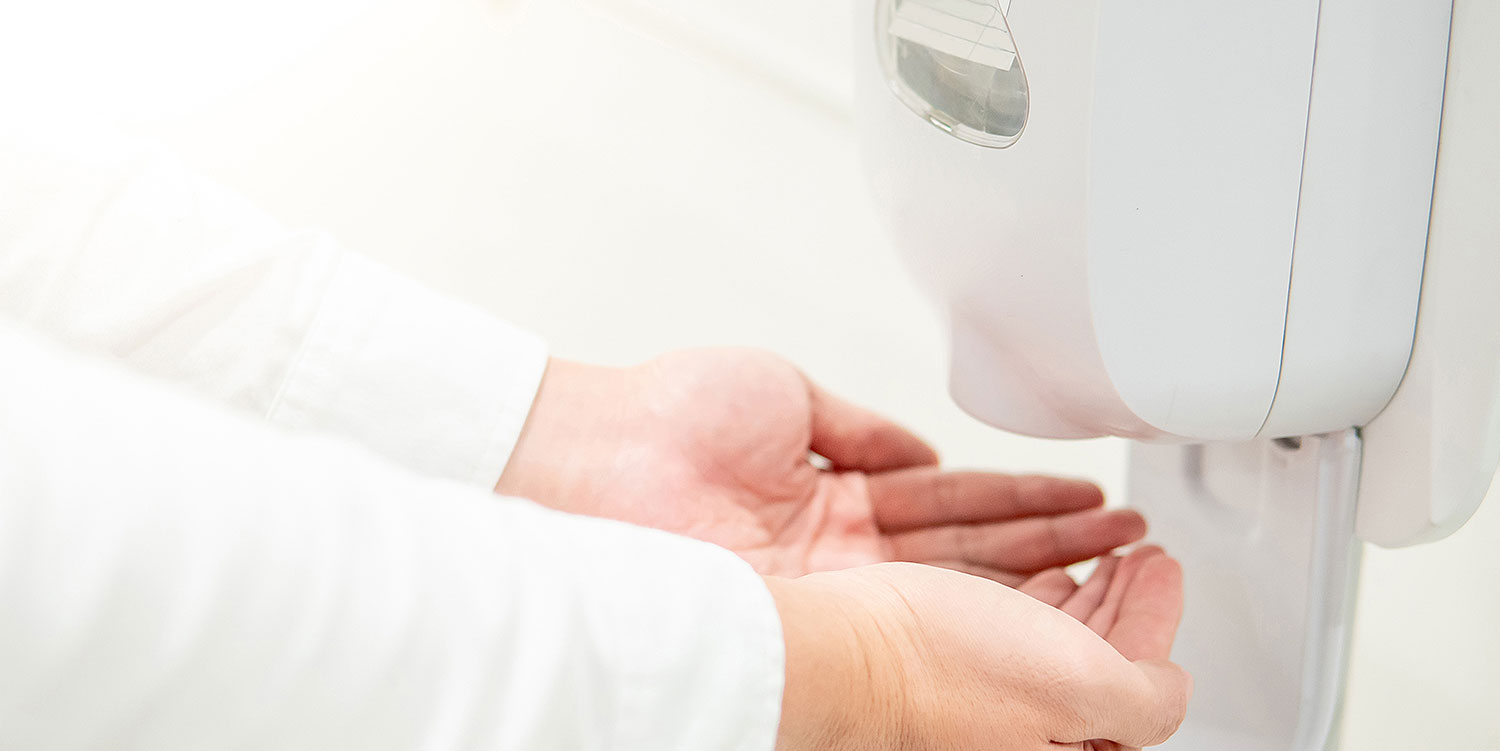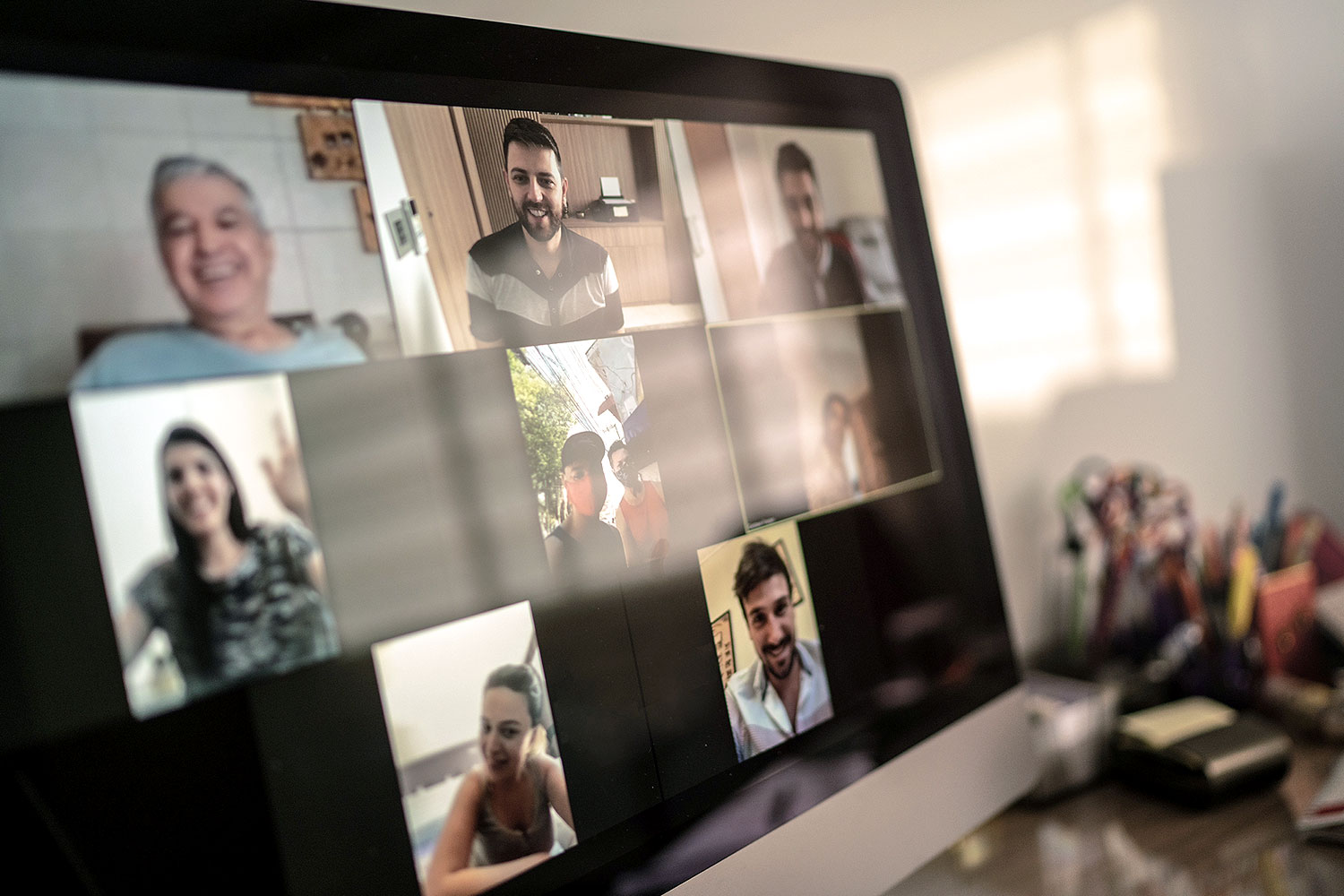
The CEA and its ecosystem
The CEA in the coronavirus pandemic
The CEA’s standing in the field of research and innovation in France, gained from its long-established nuclear power provision in the civil and defence sectors, a strong foundation in fundamental research (especially biology) and a wealth of expertise in technology development and transfer, has secured its involvement in a variety of fields since the onset of the pandemic. In collaboration with all its partners (research organisations, universities, hospital departments, businesses and local authorities) in France and Europe alike, the CEA has delivered a rapid response in front-line sectors whilst ensuring continuity of its major programme commitments.

Many CEA teams are involved in numerous research projects relating to Covid‑19.»
CEA staff have not only been involved in the manufacture and supply of PPE (masks, gloves, scrubs, aprons and hand sanitiser), they have also drawn on their vast experience in developing technologies for the medicine of the future, fundamental biology and digital transformation in the healthcare sector to launch several research projects into Covid‑19.
These projects focus on five key areas: medical devices to prevent or combat Covid‑19; vaccination strategies; infection diagnosis; the physiopathology of the disease and associated therapeutics; and the impact of the pandemic. They involve teams predominantly from three of the CEA’s four our operational divisions: Technological Research, Fundamental Research and Military Applications.
All results obtained in 2020 and at the beginning of 2021 are available on the CEA’s website.
A brochure published in March 2021 also details some of the CEA’s significant contributions to the fight against coronavirus: download here
Close monitoring of facilities
This targeted R&D effort has strengthened the CEA’s capability to protect both its staff and its facilities considerably. The organisation’s robust industrial and nuclear safety culture, combined with proven emergency preparedness, ensured its swift response in implementing business continuity plans to secure all sensitive facilities, such as test reactors, hot labs, and clean rooms.
Lockdown and widespread enforced working from home certainly proved problematic on occasion, particularly in cases where research required access to laboratory equipment or involved highly sensitive information that could not be taken outside secure premises. Some activities in affected facilities had to be reconfigured to introduce rotating schedules and strict data confidentiality, as well as COVID-19 safety measures.

This was certainly the case for three of the CEA’s main nuclear facilities - located at the Marcoule, Saclay and Cadarache sites - during the first lockdown, where only a few long-term experiments continued on a drastically reduced programme to avoid losing years of work. Waste recovery and reconditioning, dismantling, and new build activities also had to be shut down safely and securely. Only a handful of essential facilities were kept running, namely those required for monitoring activities and the Orano facilities - declared to be of national importance - at the CEA’s Marcoule site.
Transport cask maintenance and transportation activities also continued. Another example is the CEA’s clean rooms in Grenoble; these research facilities comprise platforms deemed essential to the organisation's partners in the microelectronics industry. The exceptional effort of all CEA staff involved to get these facilities back up and running by the end of May ensured normal operations were able to resume almost immediately, including the installation of a pilot line to develop a new silicon carbide substrate with high commercial potential in the power components sector.

A total of 843
new hires were recruited, assuming their roles remotely, which is not far short of the 2019 figure of 861.
Working practices have transformed
From an HR perspective, the pandemic has acted as an accelerator for transforming employment practices. The flexible and remote working measures introduced in 2019 were applied systematically wherever possible in 2020 withexceptional mass working-from-home, (WFH) and additional support for managers to comply with social distancing rules.
Similarly, training provision for employees was adapted and even enhanced in 2020, with an e-learning platform (LMS) developed in collaboration with the French national institute for nuclear science and technology (INSTN) to facilitate the transition from face-to-face teaching to distance learning for the majority. Thanks to its digital strategy, launched in 2018, the INSTN was able to ensure educational continuity for all its degree programmes. The changeover to ‘fully digital’ meant that courses and exams alike could be completed online.

Traditional communication methods have given way to remote collaboration tools, now widely used at all levels of the organisation. Deployment of these tools involved a massive effort by the CEA’s IT teams to ensure accessibility and operation that was both reliable and secure. New practices have also emerged, like HR themed webinars, covering pandemic and non-pandemic related topics such as “Managing your team in a time of crisis”, “Preparing your team for a return to the workplace” and “Career paths in industrial or nuclear safety”.
These new spaces for expression, undoubtedly here to stay, not only make it easier for employee voices to be heard and for management to respond to the issues raised - in increasingly popular online FAQs for instance - but also to fine tune any further actions. In a similar vein, CEA employees were invited to take part in an online survey at the end of June to share their experiences of the first lockdown from both a personal and a work perspective. The main takeaway from this survey was the confidence expressed by the majority of employees that the CEA had all bases covered.
Throughout 2020, HR not only managed to deliver but also strengthened its “core” missions, starting with maintaining employee salaries. Social dialogue - one of the CEA’s core commitments - progressed as in previous years. Standout moments include the negotiation of collective agreements at the height of the pandemic (managing holidays and reduced hour entitlements in April) and regular meetings of employee representative bodies, held on an unprecedented number of occasions (with no less than 15 national committee meetings taking place in 2020).
In spite of the pandemic, 843 new hires were recruited - albeit assuming their roles remotely - which is not far short of the 2019 figure of 861. More robust measures to monitor employee health and safety were implemented, while the digitisation of HR processes, instigated a number of years ago, continued at an accelerated pace. Not everything went according to plan, however; career development programmes, for instance, had to be delayed a few months, and employee performance reviews were pushed back to the end of the year.
The momentum gained in 2020 in such unprecedented times has not waned in 2021. One of the many consequences of the pandemic has been the CEA’s pledge to fulfil three main goals as a responsible employer, i.e. employing more people with disabilities; promoting gender equality in the workplace; and recruiting 1,000 young people on work experience contracts within the framework of the French government’s “Un jeune, une solution” (one young person = one solution) youth employment scheme.